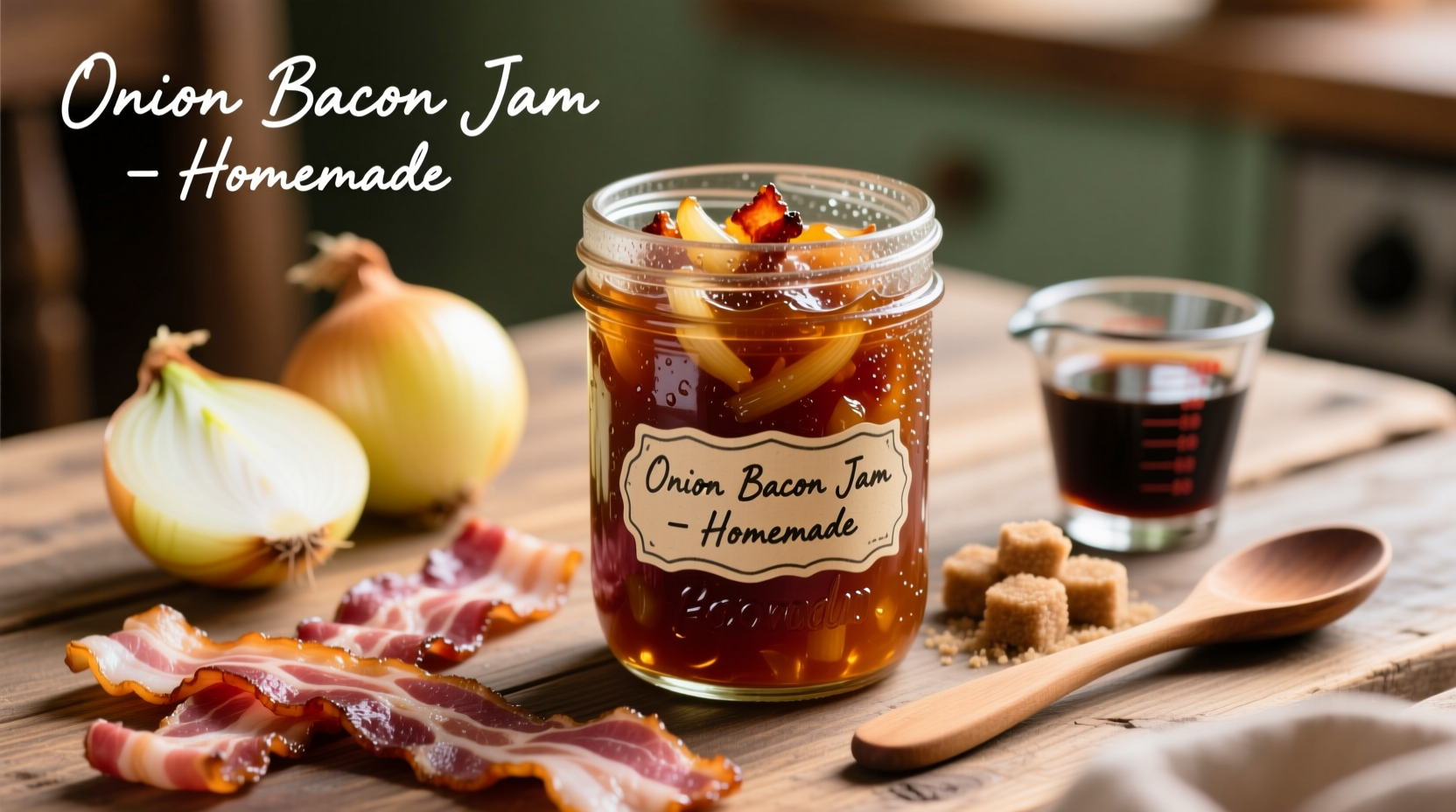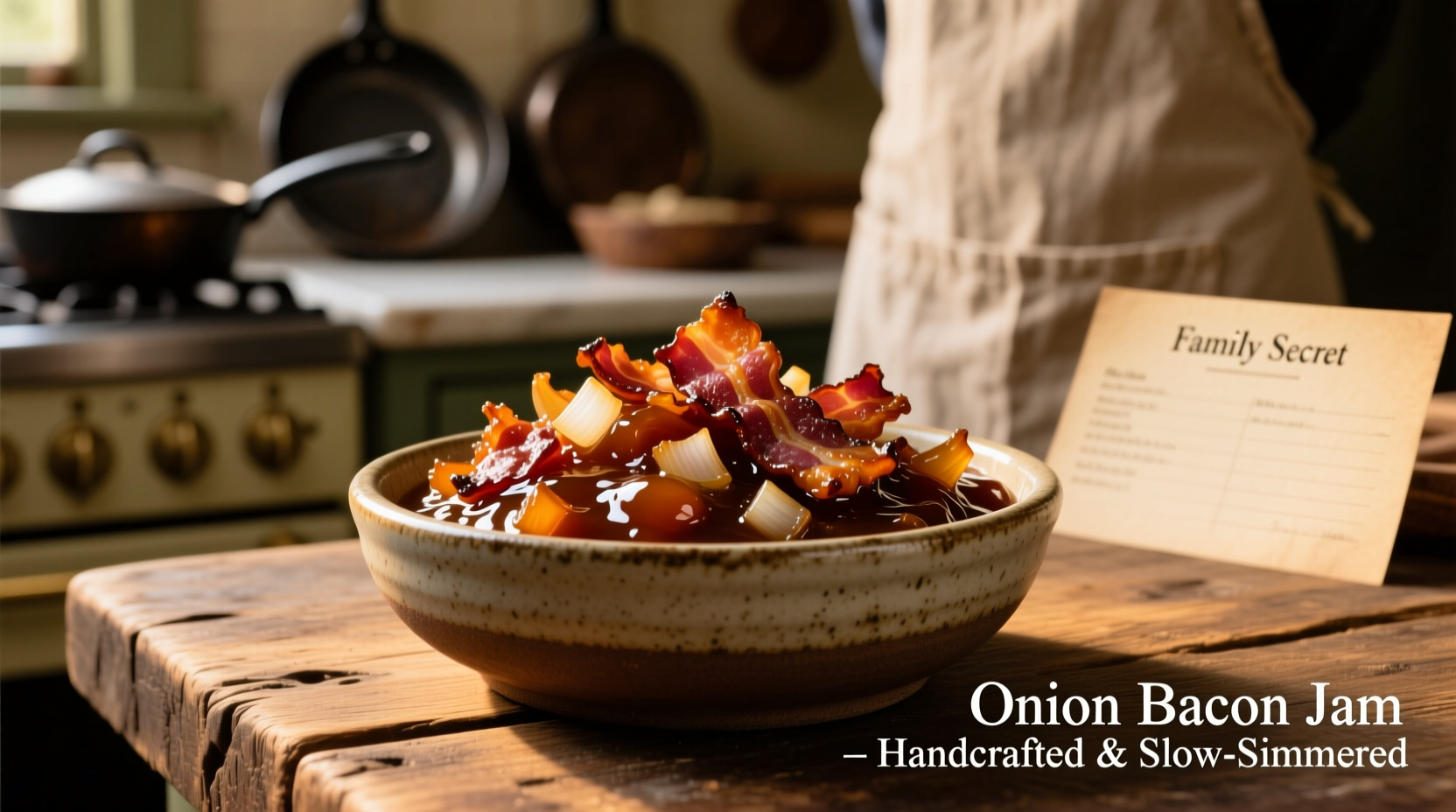Discover how this versatile kitchen staple transforms ordinary meals into extraordinary culinary experiences. Whether you're a home cook looking to expand your flavor repertoire or a food enthusiast seeking new taste sensations, mastering onion bacon jam opens doors to countless delicious possibilities.
The Flavor Science Behind Onion Bacon Jam
Understanding why onion bacon jam works so well begins with food chemistry. When onions caramelize, their natural sugars undergo the Maillard reaction, creating hundreds of new flavor compounds. Adding bacon introduces glutamates that enhance umami perception, while vinegar provides acidity that balances the sweetness. According to research from the USDA Agricultural Research Service, this combination creates a flavor synergy that's greater than the sum of its parts.
| Flavor Component | Primary Source | Effect on Palate |
|---|---|---|
| Sweetness | Caramelized onions, sugar | Initial flavor impact, balances acidity |
| Saltiness | Bacon, finishing salt | Enhances other flavors, triggers saliva production |
| Umami | Bacon, slowly cooked onions | Creates savory depth and mouthfeel |
| Acidity | Vinegar, wine | Cleanses palate, brightens overall flavor |
Essential Ingredients for Perfect Onion Bacon Jam
The quality of your ingredients directly impacts your final product. For the best results:
- Onions: Yellow onions provide the ideal balance of sweetness and pungency. Avoid red onions which can discolor the jam.
- Bacon: Choose thick-cut, smoked bacon with minimal sugar content. As noted by the Food Safety and Inspection Service, properly cooked bacon should reach 145°F (63°C) internal temperature.
- Sweetener: Brown sugar adds molasses notes that complement the bacon, though maple syrup makes an excellent alternative.
- Acid: Apple cider vinegar provides the right acidity level without overpowering other flavors.

Step-by-Step Preparation Guide
Creating exceptional onion bacon jam requires patience and attention to detail. Follow these professional techniques:
- Render the bacon: Cook 8 oz of chopped bacon slowly over medium-low heat until crisp. Remove bacon, leaving 2 tablespoons of fat in the pan.
- Caramelize onions: Add 3 lbs sliced yellow onions to the bacon fat. Cook slowly for 45-60 minutes, stirring occasionally, until deeply golden brown.
- Build flavor layers: Add 1 cup brown sugar, 1/2 cup apple cider vinegar, 1/4 cup red wine, and 1 teaspoon thyme. Return bacon to the mixture.
- Simmer to perfection: Reduce heat to low and cook uncovered for 30-45 minutes until thickened to a spreadable consistency.
- Season and cool: Add salt to taste and let cool completely before storing.
Storage Guidelines and Shelf Life
Proper storage ensures your onion bacon jam maintains quality and safety. The National Center for Home Food Preservation recommends:
- Refrigerate in airtight containers for up to 2 weeks
- Freeze for up to 6 months in portion-sized containers
- For longer storage, process in sterilized jars using proper canning techniques
- Always use clean utensils when serving to prevent contamination
Perfect Pairings for Onion Bacon Jam
This versatile condiment elevates numerous dishes. Professional chefs consistently recommend these pairings:
- Burgers and sandwiches: Spread on brioche buns before adding patties
- Cheese boards: Pairs exceptionally with aged cheddar, blue cheese, and goat cheese
- Breakfast: Elevates scrambled eggs, omelets, or breakfast sandwiches
- Appetizers: Spoon onto crostini with cream cheese or goat cheese
- Meat glaze: Brush onto pork loin or chicken during final cooking minutes
Troubleshooting Common Issues
Even experienced cooks encounter challenges with onion bacon jam. Here's how to address them:
- Too watery: Continue simmering uncovered until desired thickness is reached
- Burnt flavor: Start over—burnt sugars cannot be salvaged
- Overly sweet: Balance with additional vinegar, 1 teaspoon at a time
- Too salty: Add a peeled potato to absorb excess salt while simmering
- Separation: Blend briefly with immersion blender to re-emulsify
Creative Variations to Explore
Once you've mastered the classic version, experiment with these professional variations:
- Spicy version: Add 1 diced jalapeño or 1/4 teaspoon cayenne pepper
- Fruit-infused: Incorporate 1/2 cup diced apples or pears during caramelization
- Herb-forward: Substitute thyme with rosemary or sage for different flavor profiles
- Smoky depth: Add 1/2 teaspoon liquid smoke or chipotle peppers in adobo
- Alcohol variations: Replace red wine with bourbon, port, or stout beer
Why Homemade Beats Store-Bought
While commercial versions exist, homemade onion bacon jam offers significant advantages. According to culinary research from American University's Food Studies Program, artisanal preparations contain fewer preservatives and allow for customization to personal taste preferences. The hands-on process also develops valuable cooking skills in temperature control and flavor balancing that benefit all your culinary endeavors.











 浙公网安备
33010002000092号
浙公网安备
33010002000092号 浙B2-20120091-4
浙B2-20120091-4